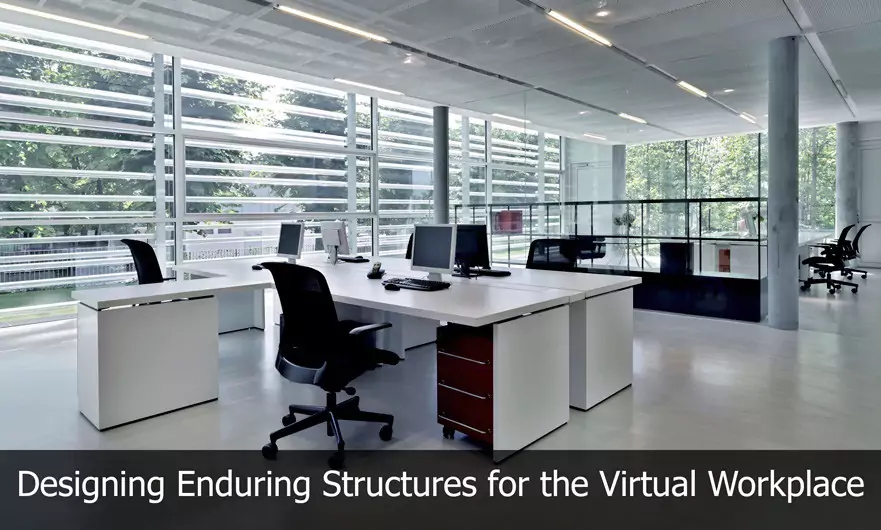Designing Enduring Structures for the Virtual Workplace

For centuries, architects have been building structures that do more than protect us from the elements. In Ancient Greece, temples were designed as powerful testaments to Greek society’s rising civilization. In the Renaissance, Italian cathedrals were designed to enhance and amplify choral music. And in the 18th century, a growing number of buildings were designed with an eye to modifying social behaviors.

One of the most well known examples of an architectural innovation designed to modify social behaviors is British philosopher and social theorist Jeremy Bentham’s Panopticon. Made initially for prisons, the design allowed a single watchman to see everyone in the building at once while simultaneously hiding him from view. In essence, the design was structured to make inmates feel like they were being watched, reducing the importance of who was on watch. By the late 19th century, the idea that architecture could be used to not only protect people from what was outside but also to modify and promote certain types of behaviors inside had expanded. Many of the great museums of the period were designed to control large crowds of visitors and to induce civilizing qualities.
It is no surprise then that by the mid-20th century, experiments in office design recognized that the spaces we occupy matter and that in the workplace, this has a direct impact on productivity and compliance. This was precisely the sort of thinking embraced by designer Robert Propst. In the late 1960s, Propst was hired by the iconic office furniture company Herman Miller to design a new line of office furniture. Among Propst’s many innovations was the introduction of the office cubicle. While the cubicle would eventually become a reviled feature of office life, its introduction was meant to free rather than trap workers. The “clam shell” effect of the cubicle, Propst believed, would afford workers more privacy, and this was assumed to be a good, not bad, thing. In the end, his experiment failed. Cubicles did not necessary block noise but they did block light, leaving many workers feeling increasingly depressed and even dehumanized. By the early 1990s, cubicles were on their way out and the open-plan workspace was on its way in.
Today, as more and more businesses operate partially or entirely on a remote basis, however, brick-and-mortar architecture and furniture design are quickly being replaced by new challenges. Can we build structures – not out of bricks and mortar but out of digital platforms – that not only link employers to employees but also promote higher levels of productivity, compliance and job satisfaction? If so, what should these structures look like given that workers may be just around the corner or thousands of miles away working in a different culture, climate and time zone? Perhaps most importantly, can we design virtual workplaces that are as stunning, enduring and effective as the architectural innovations of previous centuries from Greek temples to Italian cathedrals to 19th-century British and American museums?
It took centuries to conceive of and perfect the architecture of temples, cathedrals and museums, so chances are, the ideal virtual workplace won’t be perfected over night. If we want to create virtual workplaces that are stunning, enduring and technically sophisticated, we need to think big and bigger, and we need to embrace innovation on an unprecedented level. Choosing the right platforms and tools for the job will be part of the challenge but ultimately, it will depend on people not platforms or tools. This is where leaders and dreamers come in.
Of course, as we build structures for the virtual workplace today and in the future, we have a lot to learn from the brick-and-mortar spaces of the past. We might begin by reminding ourselves that the design of a space can both strip people of their individuality and give it back. More importantly, we might remind ourselves that the design of a space can serve surprising and diverse functions. After all, if a space designed for worship can also function as a sound technology, what wonders might the virtual workspaces of the future hold?